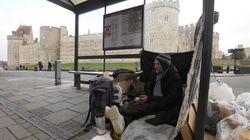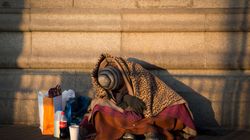The Homelessness Reduction Act has now come into force aimed at, well, reducing homelessness.
The Act’s measures include councils having new legal responsibilities to provide support to those at risk of becoming homeless and to help all those who are homeless, regardless of whether they are deemed ‘intentionally homeless’ or a ‘priority need’.
This is a positive – rough sleeping has more than doubled since 2010 – so change is desperately needed.
But the Act is not a panacea – there are big underlying issues that are contributing to the increase. There is not enough housing and cuts to housing support are leaving people in poverty and at increased risk of homelessness – and these issues need to be addressed. As do the needs of different groups of homeless people.
Women tend to be less visible on the streets, hiding themselves away to keep safe. This means they are less likely to show up in rough sleeping counts (they are currently reported to make up about 14 per cent of rough sleepers). One of the consequences of this is that women and girls at risk of homelessness are often overlooked and their needs ignored.
Women who are homeless often face a number of overlapping disadvantages. They have likely experienced extensive abuse and violence, some use drugs and alcohol to cope and many suffer with poor mental and physical health. Their needs tend to be even more complex than those of homeless men.
The streets are particularly dangerous for women. Many will have already experienced horrific abuse, which is often a key factor in their becoming homeless, and then go on to face continuing risks on the streets.
Some end up staying in dangerous and exploitative relationships with abusers or are forced into ‘sex for rent’ arrangements, just to try and keep a roof over their heads. A new report by homelessness charity DePaul showed that a fifth of young women have experienced sexual abuse or exploitation while out of ‘stable accommodation’.
But too many homelessness services don’t recognise or take into account women’s particular needs and experiences.
Homeless services tend to be dominated by men. A women who has experienced horrific abuse at the hands of a man may feel intimidated at the very least or under threat in such an environment. We know of instances where women have been raped in mixed hostels.
When women don’t turn up at these places it can be perceived as a lack of need – and so services don’t cater for them, and women end up without help trapped in a system that does not work for them.
So while the Homelessness Reduction Act is a step in the right direction, we need to see far more change in order to address women’s homelessness.
The Act offers an opportunity for local authorities to look at how they better respond to the needs of all those who are at risk of homelessness, and that must include women, many of whom will have experienced violence and abuse across their lives.
Councils need to be commissioning services that specifically support women and girls and take into account their experiences of violence and trauma, not adding to them.
And of course, the government needs to be driving this forward, by investing in services that do such vital work.
The Homelessness Reduction Act is a positive step and change is much needed, but we won’t be able to take the necessary strides forward, without also tackling the wider challenges facing women at risk of homelessness.



